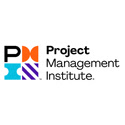Certified Information Security Manager (CISM)
About This Course
An independent association, ISACA advocates for all the IT professionals involved in the field of risk management, information security, governance, assurance and compliance. Currently, ISACA serves more than 110,000 constituents. ISACA certified work as CIOs, IS auditors, security professionals/consultants and internal system auditors. ISACA certifications work in almost all the industry domains.
CISM is a management-oriented certification, which validates international security standards and authenticates an individual to design, administer and assess enterprise information security. An advanced level ISACA certification, CISM validates candidates to demonstrate expertise and knowledge required to manage and develop enterprise security programs. The certification is aimed at IT consultants, budding IT managers and information security personnel, who are involved in the support and maintenance of enterprise information security systems.
Who Should Attend This Course
CISM certification is globally accepted and is best for:
- Chief risk/privacy/compliance personnel
- IT/IS consultants
- Information security personnel
- CISO (Chief Information Security Officer)
- Security system managers
- Security architects and auditors
- IT managers and directors
- Security managers and consultants
Why This Course
The CISM certification from Tech-Act intends to nurture IT experts in the field of information security management. Designed to train professionals about international and industry-grade security expertise and practices for managing, assessing, administering and designing IT security for businesses of all sizes. The course helps you gain core skillsets to maintain security aspects of enterprise IT. Candidates develop and learn critical thinking abilities to help execute tasks needed to secure and manage information systems.
Most importantly, it is a globally accepted ISACA certifications and lucrative as well with businesses offering high salaries.
After you successfully complete the CISM course, you can:
- Manage and develop information security
- Administer incident management
- Manage risk compliance
Administer Information security
Did you know that CISM certified professionals earn an average salary of around $122,291 / annum. (Source: itcareerfinder.com)
Course Objectives
CISM certification from Tech-Act will train you on the important expertise required to deploy, manage and design enterprise security architecture. Aligned with ISACA prescribed practices, the course is meticulously devised to pass the CISM examination. Organizations as well as government enterprises expect IT professionals to possess a CISM certification. It is also essential to boost your career development and IT knowhow. This course arms you with the required skills and knowledge to manage compliance and security of your IT firm.
Course Prerequisites
5 years of experience in information security with a least of 3-year experience in information security management.
Course Benefits
Post the successful completion of this course, you learn about:
- Information security management and development
- Information security (IS) incident management
- Information risk compliance and management
- Information security governance.





























